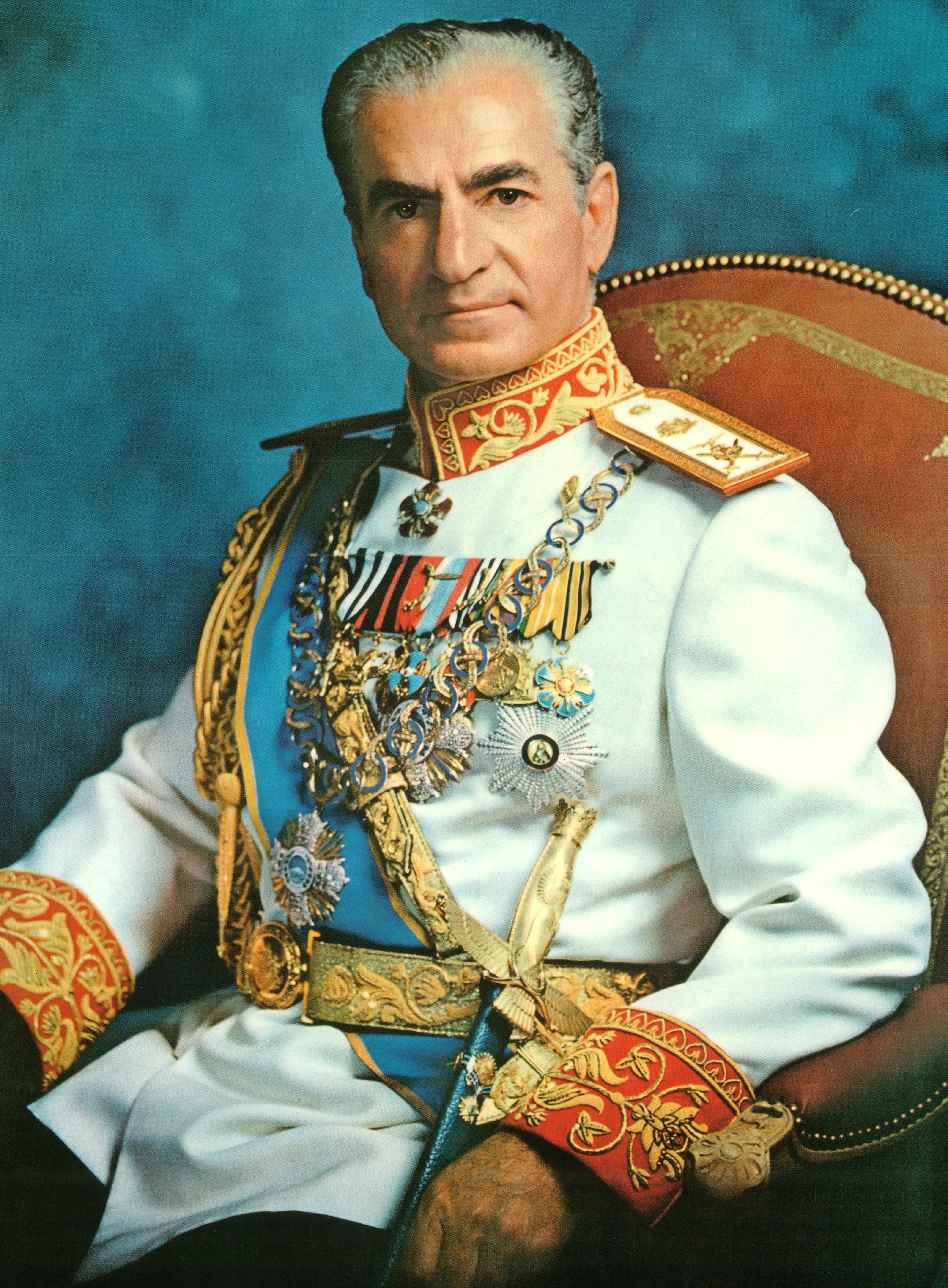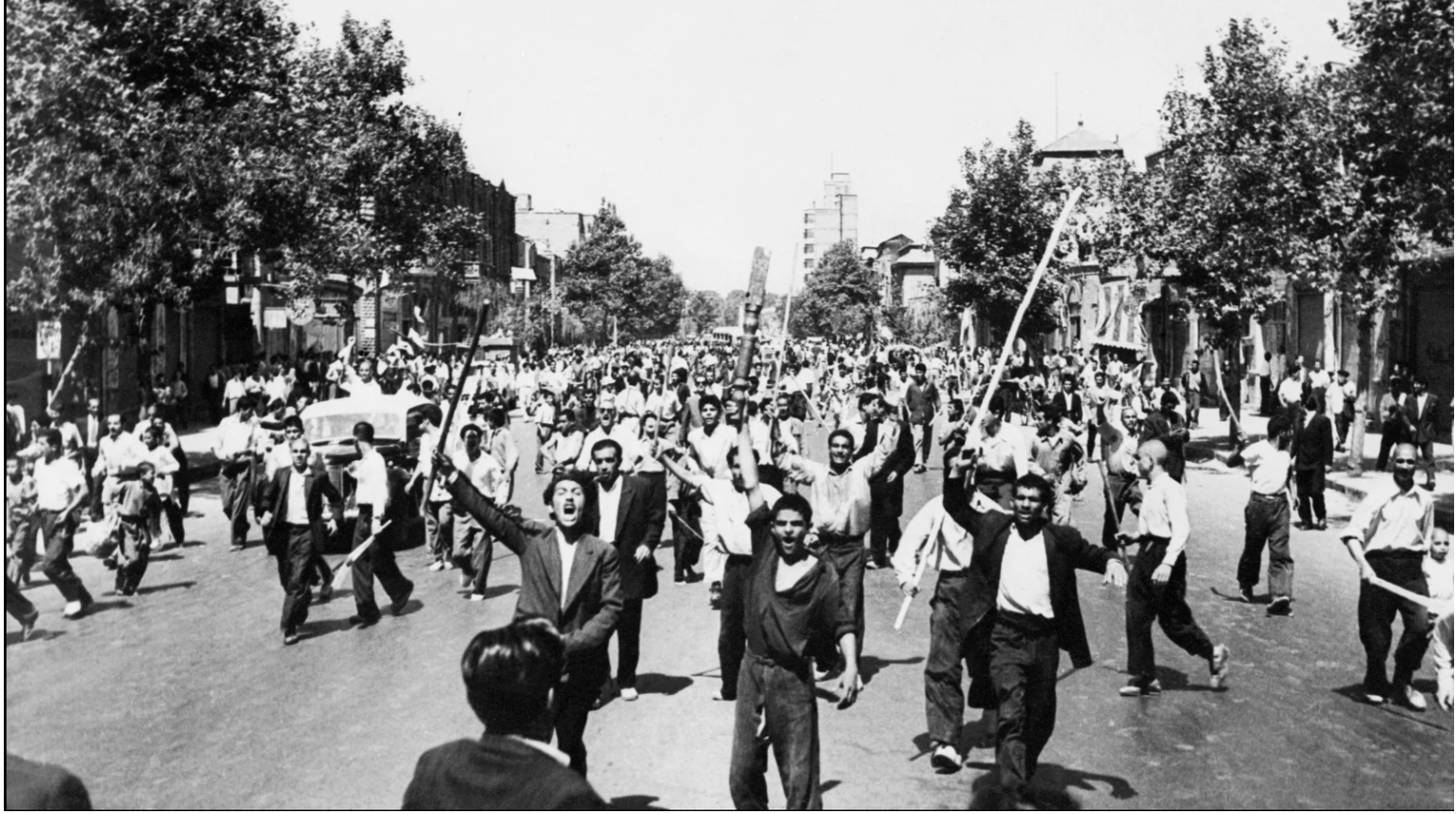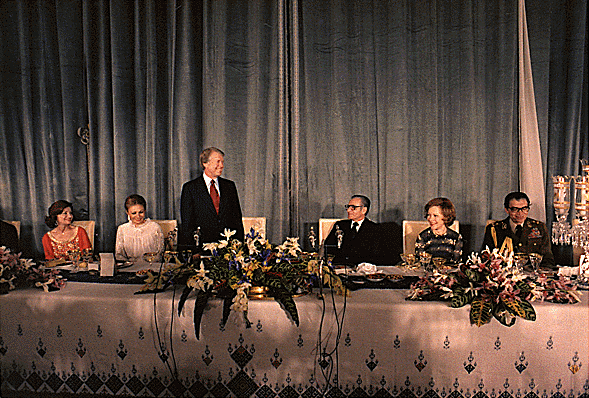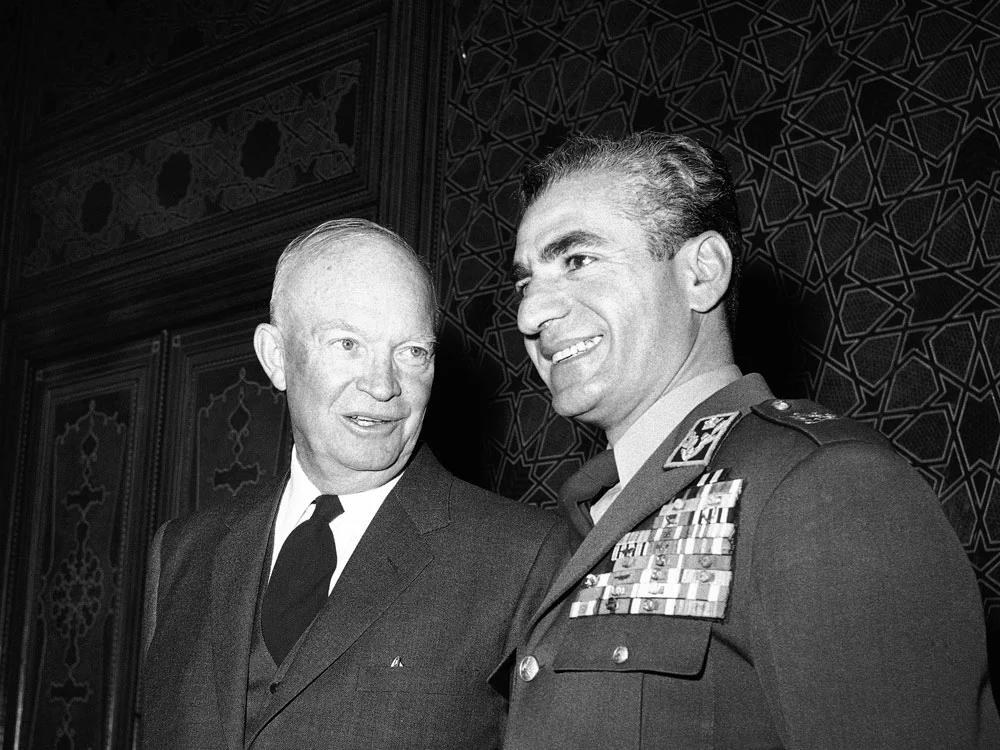Background
THE SHAH
In 1941, Mohammed Pahlavi began his reign as the Shah of Iran, with a dream of modernizing his country. In 1953, a coup orchestrated by the United States and Great Britain gave the Shah autocratic support in return for its oil. This caused an issue with the religious groups of Iran as the money didn’t go to them. This support continued causing a rift between the Shah and head of the religious groups. In 1979, it was one reason Iranians were calling for his arrest.

Shah Official Portrait, 1973

Iranian Protest, August 19, 1953, AFP/Getty Images

Atoms for Peace Agreement, December 1977
DISTRUST OF AMERICA
Iran became divided between the government and religious groups over different visions for the country. The United States took sides with the Shah. This led to chants of “Death to America” and greater support for Imam, Iran's religious leader. Division escalated more when President Carter visited the Shah in 1977.
ATOMS FOR PEACE
President Eiserhower's Atoms for Peace Program was intended to provide countries with civilian nuclear technology in hope they wouldn’t pursue military nuclear programs. Once Iran's oil boom started in 1970, so did their nuclear program. American officials tried to negotiate limiting their nuclear program, but the Shah disagreed and insisted Iran had the right to nuclear power.

December 1959, Marble Palace in Tehran, Iran.
The United States' plan in moderization backfired, but the Shah needed United States' help in defense against their enemies. “West-Toxification” was a term being used to denounce Western influence and reject any help from them.